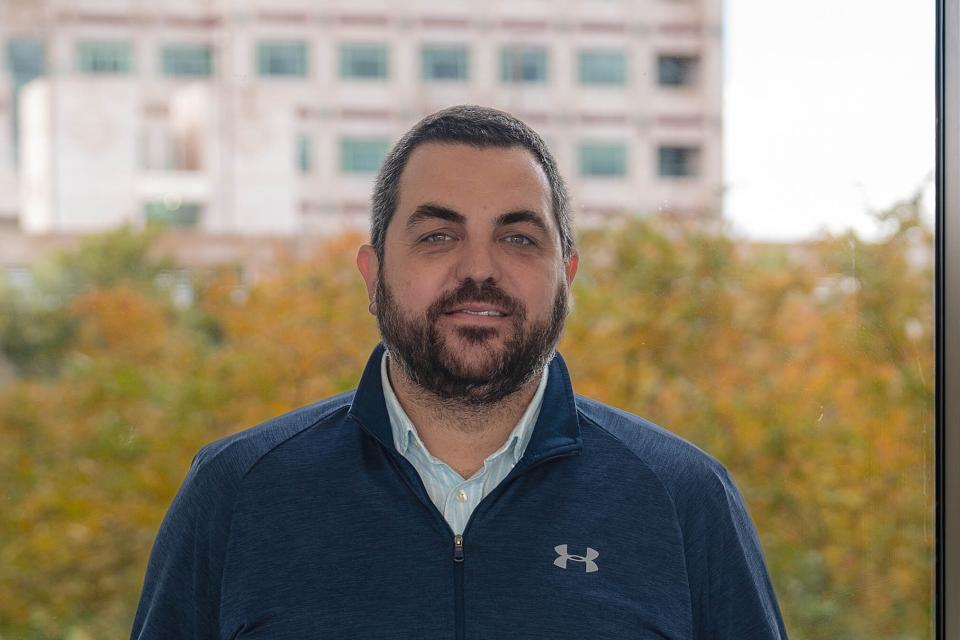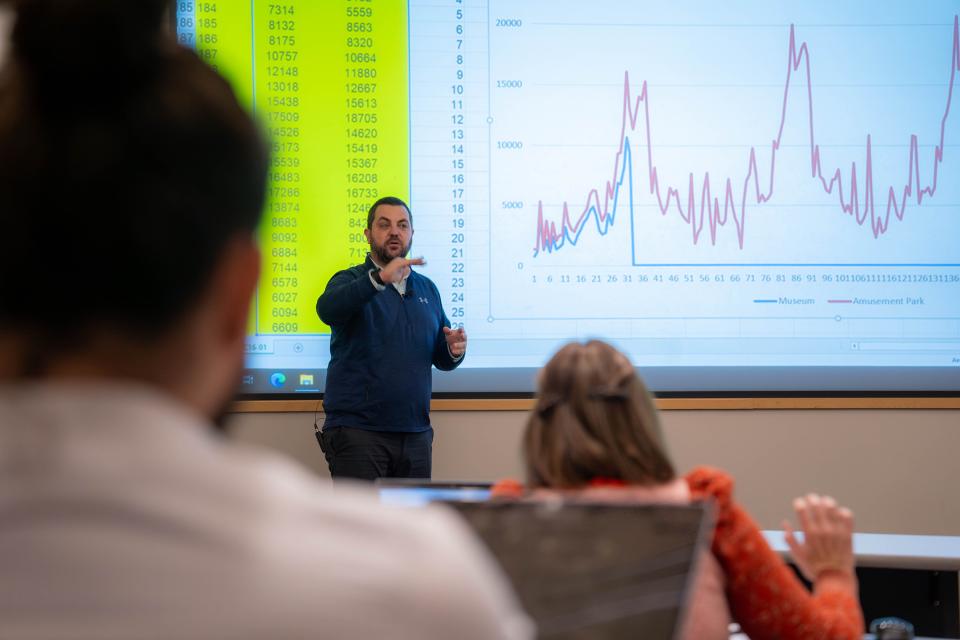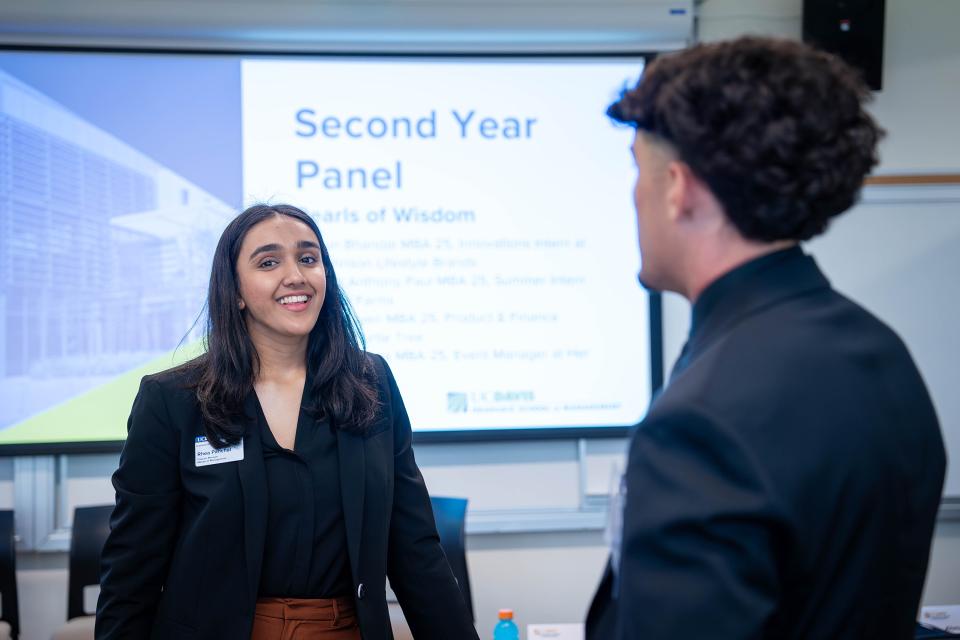Sebastian Calonico Teaches Future Leaders How to Separate Signal from Noise
Applying causal inference to teach smarter business decision-making

What if you could separate signal from noise in the sea of data that drives today’s business world?
Assistant Professor Sebastian Calonico’s research on causal inference—the science of distinguishing cause from coincidence—has shaped policy decisions in healthcare and economics, and now he’s bringing those same tools into the classroom.
For UC Davis Master of Management students, that means learning how the same methods used to evaluate pandemic responses or public health programs can guide smarter choices in consulting, tech and beyond.
When Calonico arrived in Davis after five years on the faculty at Columbia University, he brought with him a passion for teaching and a research portfolio that blends econometrics and data science.
He was born in Haedo, a relatively small city near Buenos Aires, Argentina and went on to earn four degrees in economics and statistics: a Bachelor of Arts in Economics at Universidad de Buenos Aires and a Master of Arts in Economics at Universidad Torcuato Di Tella. He later received a Ph.D. in Economics from the University of Michigan, where he also obtained a Master of Arts in Statistics.
His work has appeared in leading journals, including Econometrica, Review of Economics and Statistics and Journal of the American Medical Association.
We asked Calonico how he helps students from diverse backgrounds think critically about evidence, connect theory to practice and prepare for leadership in today’s fast-changing business environment.
1. How do you bring your research into the classroom?

My research focuses on causal inference—how we can rigorously separate cause from coincidence in complex real-world settings. In class, I bring this perspective by showing students how the same methods used to evaluate public policies or health interventions can also guide business decisions.
For example, I’ll take case studies from healthcare and tech to show how data and careful analysis can help managers make better choices under uncertainty.
2. What’s one concept or topic you love teaching in the MM program—and why?
I especially enjoy teaching students how to think critically about evidence. It’s not just about running models—it’s about asking: “What does this result really mean? Can I trust it? How might it change my decision?” This mindset is powerful across industries, and it’s rewarding to see students develop the confidence to question data instead of taking results at face value.
3. How do you tailor your teaching to students who come from non-business backgrounds?
Many MM students don’t arrive with prior training in economics or statistics, so I emphasize intuition and practical application. I use visuals, analogies and real-life examples—often from areas like health, sports or everyday decision-making—to make abstract ideas concrete.
The goal is for students to walk away not just knowing formulas but understanding why they matter.
4. How do you incorporate current business trends or real-world examples into your teaching?
I regularly integrate examples from current events, emerging technologies and policy debates. Whether it’s how companies are using machine learning for customer analytics, or how governments evaluate pandemic responses, we use these cases to link theory to practice.
Students see that the tools they’re learning are directly relevant to today’s fast-changing business environment.
5. In what ways does the MM curriculum prepare students to lead or manage in today’s fast-changing business environment?
The MM program equips students with both the analytical toolkit and the adaptive mindset needed to navigate uncertainty. We emphasize critical thinking, data-driven decision-making and the ability to communicate insights effectively—skills that are essential for leadership in organizations facing rapid technological and global change.
6. What advice would you give to someone considering the UC Davis MM program?
Come with an open mind and a willingness to engage with new ideas.
Our Master of Management is designed for students from diverse backgrounds, and that diversity is one of its biggest strengths.
Be ready to learn not only from faculty but also from your peers, who bring perspectives from across industries and disciplines.
7. How do you see MM graduates using what they learn in your class in their future roles?
I hope students leave my class with a sharper ability to distinguish signal from noise when making decisions. Whether they go into consulting, tech, healthcare, or start their own ventures, they’ll face situations where the evidence is messy or incomplete. The ability to ask the right questions and make disciplined, informed choices will serve them throughout their careers.
Learn more about the MM program and take the next step in your leadership journey.


